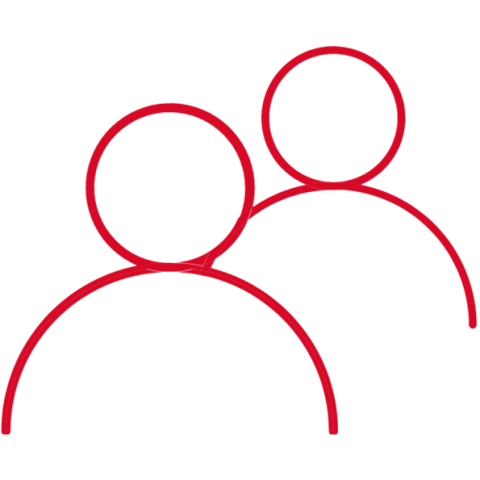Creativity Crimewatch - Is Your Brand Guilty Or Innocent?
28 Sep 2022
Back in August 2017 (now half a decade ago… yikes!) I shared an article titled ‘17 Ways To Murder An Idea’. It was a writeup of a photocopied handout - a relic of a time long forgotten, before the internet, chain emails and viral content ever existed. Despite its age, the items on the list were as relevant as ever, and got me thinking about how, in an increasingly rapid-paced world, great ideas can be killed by bad practice.
In 2022, AAR released our Creative Capital Manifesto. It’s a rallying cry to the industry, and a culmination of our research conducted with CMOs, which shed light on a significant issue: the vast majority of organisations still aren’t investing enough in creating the conditions for Creativity to occur on a regular, repeatable basis.
This reminded me of those 17 ways to murder an idea, but in a much broader context. For organisations to grow Creative Capital as a measurable, tangible thing, ensuring the right ideas aren’t killed off early is a pretty important piece of the equation. The key to success is therefore forensically examining how an organisation encourages and facilitates creativity across its people, partners, processes and platforms… or not.
With that in mind, we’re thinking bigger this time round. There are a lot of things to consider when it comes to creating the right environment for creativity, so, with tongue firmly in cheek, here’s my ‘creativity crimewatch’ - a list of things you should only do if you want to prevent any meaningful creativity in your organisation:
1. Keep processes bloated
We all know that the best creative processes are lean and refined - so simply ensure to approach everything, from your internal communications to the way you utilise your platforms, in a complex, time-consuming way.
2. Don’t empower your teams or encourage autonomy
Creativity by committee can be ineffective and exhausting - making it one of the best ways to limit your potential Creative Capital. Make sure no one has the autonomy or encouragement to explore or initiate creative ideas in the organisation, and enforce processes that mean all ideation can only be done in large project groups or committees where innovation is sure to be squashed into oblivion.
3. Never see each other in person
The pandemic redefined working patterns for many of us, and during lockdowns remote working was a necessity. The kind of organic creativity facilitated by simply collaborating in-person in the workplace was put on hold so if you want to ensure your teams can’t tap into this moving forward, make sure they’re never in the same room together! Or do the hybrid. Yes I know there are fantastic tools these days (go Miro) but these only work if all know how to use them and all are gurus too.
4. Be sure to keep marketing separate from other parts of the business
If you’re going to infuse creativity throughout your entire organisation, and increase your Creative Capital in a meaningful way, you’ll need to bring other departments into the fold and make sure everyone is aligned on your growth goals. To suffocate creativity on an organisational level, simply make sure your marketing ecosystem is entirely siloed from every other part of the business.
5. Keep your stakeholders in the dark
Seeing as senior stakeholder buy-in is a crucial ingredient to achieving meaningful change, take some time to make sure your stakeholders are kept out of the loop, and are unable to help you communicate or reinforce your goals across the wider business!
6.. Write the same brief for every task
There are countless different types of briefs for different tasks, and recognising this and adapting your briefing process can massively increase creative potential for your in-house agencies, creative teams, and external partners. So to prevent this from happening, treat briefs with a ‘one-size-fits-all’ approach to guarantee your teams don’t have the right ingredients to achieve their best work.
7. Stick to business as usual
At the heart of organisational creativity is an open attitude towards change and innovation - to suffocate creativity, all you need to do is ensure you just stick to what’s worked well in the past, and never explore pushing the boundaries of your processes, platforms, and more. Or ask for the proven ROI/ business case for a never-before-tested idea. That’ll work…
8. Palm feedback off to junior staff
Seeing as agency and in-house teams need effective, well thought-out feedback to refine and improve how they approach tasks and projects creatively, a great way to stifle their success is to treat feedback as an afterthought, and give it to the most junior executive you can find (and be sure not to review how you give feedback internally either!).
Obviously, all of this is tongue in cheek. But it touches on a real, very present issue for many businesses - they know they need to encourage and facilitate more Creative Capital in their organisation and marketing ecosystem, they’re just not sure how to do it.
Einstein’s definition of madness was repeating the same behaviour over and over, and expecting a different outcome. In this respect, businesses are quite literally mad if they don’t explore how to make changes to their processes, people, partners and platforms, and their overall marketing ecosystem.
A large part of this inertia is simply not knowing where to start, and for larger businesses with long-embedded ways of working, this can be really challenging. But if any of the points above ring true, then things need to change. A great starting point is downloading AAR’s Creative Capital Manifesto, and Marketing Ecosystem Blueprint via our website.
Then, if the findings, research, and conclusions of those reports strike a chord - feel free to reach out. We’d love to talk, because while some ideas may still get murdered, and creativity can be a tricky thing to master, having the right insight and taking some steps to making the right changes can put you on the road to getting the very best out of your marketing ecosystem - and achieving meaningful, sustainable growth.
About The Author




